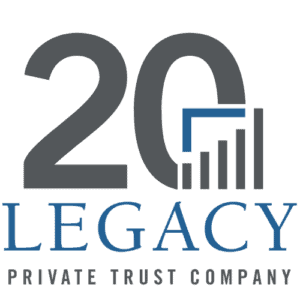March is a significant month dedicated to celebrating Women’s History Month, a tradition rooted in the United States’ acknowledgment of women’s contributions and achievements across various fields. Initiated in 1981, when Congress authorized the first “Women’s History Week,” this celebration expanded in 1987 to encompass the entire month, thanks to the National Women’s History Project advocacy. Since then, annual resolutions and proclamations have highlighted the importance of this month, underscoring the remarkable impact women have had on American history and society.
Financial Independence: The Foundation of Empowerment
Financial management is a cornerstone of empowerment for single women, whether divorced, separated, or choosing to live independently. It enables the freedom to live on your own terms, affirming that while happiness isn’t bought, financial well-being significantly influences one’s future and quality of life. Achieving financial stability doesn’t necessarily demand extensive time or resources but rather a commitment to mastering the fundamentals of personal finance.
Ten Key Strategies for Financial Freedom
Achieving financial independence and freedom involves a multifaceted approach, integrating intelligent savings habits, debt management, and strategic planning. Here’s a look at the key strategies single women can adopt to navigate their financial journey with confidence and foresight.
- Prioritize Savings: Building a Solid Foundation
- Automate Savings: Set up automatic transfers to your savings account. This “out of sight, out of mind” approach ensures you consistently save without thinking about it.
- Emergency Fund: Aim to save at least three to six months’ worth of living expenses in an easily accessible account. This fund acts as a financial safety net for unexpected expenses.
- Minimize Debt: Cultivating Financial Freedom
- Debt Snowball Method: Tackle debts by paying off the smallest balances first while making minimum payments on others. This strategy provides motivational wins and can help clear debt faster.
- Balance Transfer Cards: Consider transferring high-interest credit card debt to a card with a 0% introductory APR to save on interest charges, making it easier to pay down the balance.
- Maintain Stellar Credit: A Gateway to Financial Opportunities
- Credit Monitoring Services: Utilize free credit monitoring services to keep tabs on your credit score, watch for fraud, and understand factors affecting your credit.
- Dispute Errors: Promptly dispute any inaccuracies on your credit report to ensure your credit score accurately reflects your financial behavior.
- Diversify Investments: Securing Your Financial Future
- Asset Allocation: Spread investments across different asset classes (stocks, bonds, real estate) to reduce risk and improve potential returns.
- Retirement Accounts: Explore various retirement accounts to find the best fit for your goals, including traditional IRAs, Roth IRAs, and employer-sponsored plans.
- Leverage Tax Advantages: Maximizing Your Wealth
- Health Savings Accounts (HSAs): If eligible, contribute to an HSA for tax-free contributions, growth, and withdrawals for qualified medical expenses.
- Tax-Efficient Investing: Consider tax-efficient funds and strategies to minimize the impact of taxes on your investment returns.
- Update Estate Plans: Protecting Your Legacy
- Digital Assets: Include digital assets and online accounts in your estate planning to ensure comprehensive coverage.
- Beneficiary Designations: Regularly review and update beneficiary designations on retirement accounts and insurance policies to reflect current wishes.
- Assess Insurance Coverage: Ensuring Adequate Protection
- Umbrella Insurance: Consider an umbrella policy for additional liability coverage beyond standard insurance policies, offering extra protection against unforeseen events.
- Periodic Insurance Review: Conduct annual reviews of all insurance policies to adjust coverage as life circumstances change.
- Plan for Long-Term Care: Preparing for the Future
- Hybrid Policies: Look into hybrid life insurance policies with long-term care riders, which can offer flexibility and a death benefit if long-term care isn’t needed.
- Government Programs: Understand the eligibility and benefits of government programs like Medicaid for long-term care planning.
- Establish a College Fund: Investing in Education
- Automatic Contributions: Set up automatic monthly contributions to a 529 plan or educational savings account to grow education funds consistently.
- Explore Scholarships: Actively seek out scholarship and grant opportunities to supplement savings and minimize future student loan debt.
- Set and Review Financial Goals: Charting a Path to Success
- SMART Goals: Ensure your financial goals are Specific, Measurable, Achievable, Relevant, and Time-bound.
- Financial Check-ups: Conduct semi-annual financial reviews to assess progress, recalibrate goals, and adjust strategies as necessary.
A Path to Financial Well-Being
For single women, focusing on these financial basics is not just about securing a stable future; it’s about claiming the power to shape that future according to personal aspirations and values. Starting this journey toward financial independence can significantly enhance both emotional and financial well-being, laying the groundwork for a life lived fully and freely on your terms. This Women’s History Month, let’s embrace the opportunity to empower ourselves and the women around us with the knowledge and tools necessary for financial independence and success.
If you are a Legacy client and have questions, please do not hesitate to contact your Legacy advisor. If you are not a Legacy client and are interested in learning more about our approach to personalized wealth management, please contact us at 920.967.5020 or connect@lptrust.com.
This newsletter is provided for informational purposes only.
It is not intended as legal, accounting, or financial planning advice.




